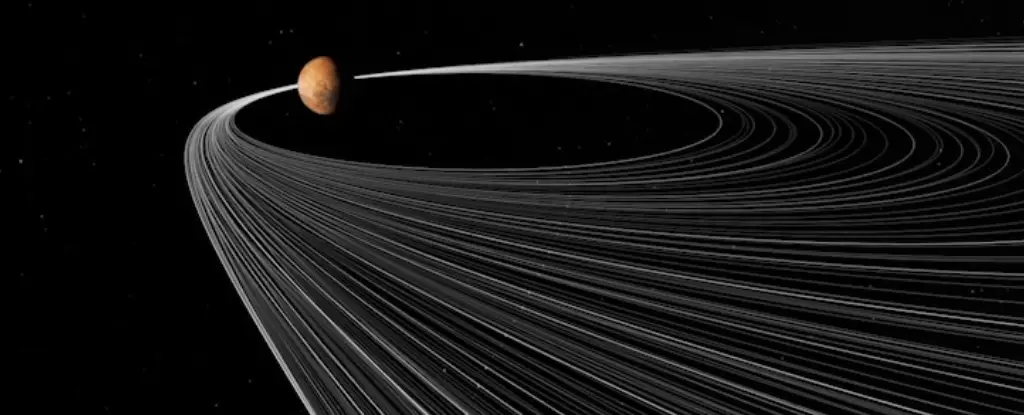The Martian moons, Deimos and Phobos, are fascinating celestial bodies that have intrigued scientists and stargazers alike. Unlike Earth, which possesses a single, large moon believed to have formed from a colossal impact over four billion years ago, Mars presents a unique scenario with its two small and irregularly shaped moons. The origins of Deimos and Phobos have perplexed astronomers for decades, leading to various hypotheses about their formation.
Many researchers believe that Deimos and Phobos are remnants of the asteroid belt that lie between Mars and Jupiter. Their composition, similar to that of carbonaceous asteroids, supports this notion. Specifically, their surfaces are covered with a thick layer of regolith, indicating a history of meteorite impacts that is typical of small celestial bodies. However, while the idea of asteroids being captured by Mars has some merit, it raises serious questions about the mechanisms involved in such a capture due to Mars’s relatively weak gravitational field compared to larger planets like Earth and Venus.
Mars, being smaller and less massive, would have a difficult time pulling asteroids into stable orbits. This brings into question how exactly two moons could successfully coalesce around a planet that, in theory, lacks enough gravitational force to secure even one. Moreover, if we delve deeper into their orbits, Deimos and Phobos exhibit circular paths, which is not typical for bodies captured via gravitational influences. Capture events usually lead to eccentric orbits, contradicting the observations recorded for these Martian moons.
An alternative model proposes that Deimos and Phobos originated from a primordial collision similar to Earth’s Moon formation. In this hypothesis, an object roughly three percent the mass of Mars would have collided with the planet, generating a large debris disk from which the moons could eventually form. This theory accounts for the circular orbits of both moons, suggesting an event powerful enough to disperse particles but not overwhelming enough to disrupt Mars’s structure.
Nevertheless, this model faces its problems because debris disks that form through collision are generally confined to relatively close proximity to the parent planet. In this context, Phobos orbits exceptionally close to Mars, but Deimos resides significantly farther away. This disparity raises further questions regarding the efficiency of debris ring formation and the subsequent orbital stability of the resulting moons.
A more recent and intriguing proposal introduces the concept of a near-miss event involving a large asteroid. This theory purports that a fast-moving asteroid made a close approach to Mars, its tidal forces fracturing and trailing fragments alongside the Red Planet. Some of these fragments were subsequently caught in elliptical orbits around Mars.
Computer simulations indicate that, over time, these orbits would evolve due to gravitational interactions with the Sun and other bodies within the Solar System, potentially leading to collisions among the fragments. Such collisions would effectively generate a debris ring from which both Deimos and Phobos could originate. Unlike traditional capture or impact theories, this model provides an alternative solution, accommodating both the close proximity of Phobos and the more distant orbit of Deimos.
Despite the intriguing possibilities these theories present, one glaring issue remains: a definitive understanding of the Martian moons’ origins can only be fully resolved through direct analysis of their composition. In pursuit of this goal, the Mars Moons eXploration mission (MMX) is set to launch in 2026. This ambitious project aims to gather samples from Phobos and study both moons in detail.
The findings from MMX hold the potential for groundbreaking insights into the formation and evolution of these enigmatic Martian companions. As we prepare for this significant mission, it becomes evident that our curiosity regarding the cosmos extends far beyond mere observation; it propels innovative exploration initiatives that may ultimately reshape our understanding of planetary systems and their numerous mysteries.


Leave a Reply